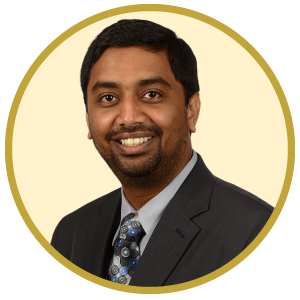Session 2: Innovations for Wellness: Harnessing Technology for Ageing Well
As technology rapidly advances, the care and quality of life for older adults are being transformed in significant ways. Technological and social innovations are playing crucial roles in addressing the specific needs of a growing ageing population. In this session, we will discuss cutting-edge technologies such as wearable health monitors, telemedicine, and smart home systems that are revolutionizing how we support older adults’ well-being. Additionally, we will explore social innovations that integrate technology to enhance the quality of life for ageing individuals. This includes community-based tech initiatives, collaborative platforms, and solutions that foster social engagement and connectivity among seniors.Read More!
Discussion Questions:
- What are the most promising technological and social innovations currently available for supporting the wellness of older adults, and how can they be effectively integrated into daily life?
- What challenges do elderly individuals face in accessing and utilizing new technologies and social innovations, and how can these barriers be overcome?
- How can technologies and social innovations be utilized to enhance both physical and mental health for ageing populations, and what are some successful examples of its application?
- What are the barriers to the widespread adoption of these technologies and social innovations among different demographics of older adults, and how can they be overcome?
- The use of smart home systems and wearable devices can lead to concerns about constant monitoring and invasion of privacy. How do we address these ethical issues while still benefiting from the technology?
- There may be significant disparities in access to technology based on socio-economic status or geographic location. How can we ensure that technological advancements are accessible to all older adults, not just those who are financially well-off?
Moderator:

Asst. Prof. Dr. Tobias Endress,
Assistant Professor of AIT School of Management at Asian Institute of Technology
Speakers:

Important points:
- Underrepresentation of non-European populations:
○ 81% of genetic data as of 2016 came from people of European ancestry; the gap has only widened by 2022.
○ Populations from Africa, Asia, and Latin America remain significantly underrepresented, which affects the accuracy of genetic diagnostics and treatments. - Consequences in pharmacogenomics:
○ Example: a child in Ethiopia metabolized codeine too quickly due to a genetic variant, leading to fatal toxicity.
○ The gene CYP2D6 affects metabolism of 25% of all prescribed drugs, yet data on non-European variants is scarce. - Gender bias in clinical trials:
○ Women, especially elderly women, suffer more adverse drug reactions but are underrepresented in studies.
○ Most clinical trials have been based on male and European subjects, creating diagnostic and treatment biases.
- Impact on diagnosis and treatment:
○ Lack of diversity skews risk assessment tools and treatment guidelines, putting non-European populations at greater risk of misdiagnosis or ineffective therapies. - Call to action for equitable science:
○ The UN asserts equal access to scientific advancement. Bridging the diversity gap is necessary to achieve that right in genomics.
1. Ms. Grace Chan,
Business Director at the Hong Kong Council of Social Service, International Vice President of the International Federation on Ageing

Important points:
- Japan leads in healthy life expectancy:
○ With policies like "Pin Pin Korori" (living healthily until death), Japan promotes well-being through retirement age extensions and national health innovations. - Tech innovations support aging society:
○ Telemedicine, drones for deliveries, and digitized medical records connected to national ID cards enhance access and efficiency. - Digital nursing and care robotics:
○ AI-based care plans, predictive excretion monitors, and emotionally supportive robots help address human resource shortages in elder care. - Transportation tech reduces accidents:
○ Seniors must pass cognitive tests to retain driver’s licenses; technologies like automatic braking and autonomous vehicles aim to maintain mobility. - Cultural skepticism toward data sharing:
○ Despite tech advances, many (including his own wife) distrust data-sharing systems, revealing a need for stronger governance and public reassurance. - Aging is linked to loneliness:
○ Technology can help overcome isolation through expanded access to information and social connections, offering hope beyond physical decline.
2. H.E. Masaharu Nakagawa,
Former Minister of Education, Culture, Sports, Science and Technology of Japan

Important points:
- Healthy aging starts early:
○ Behaviors from childhood impact long-term health outcomes; prevention must begin well before age 60. - Social determinants outweigh medical treatments:
○ Issues like food insecurity, mental health, transportation, and community support are more influential than medical interventions in overall health. - Cultural and individual context is critical:
○ Health strategies must adapt to local cultures, behaviors, and community traits—one-size-fits-all national plans often fail. - Genetic traits influence health behavior:
○ Tendencies like laziness or unhealthy eating may be heritable and shape chronic disease risk across generations. - Intergenerational solutions foster wellness:
○ Programs that combine elderly care with youth services (e.g., daycare + senior homes) enhance cognitive and social well-being. - AI and wearables create opportunities—but need integration:
○ Devices are generating valuable data, but there’s a lack of standardized protocols to use them effectively in care systems. - Data governance and trust must improve:
○ Patients need clear, transparent data policies to build trust in digital healthcare; HIPAA-like protections are spreading globally. - Advocacy and leadership are key:
○ Change starts with small-scale champions who advocate for trusted, inclusive, and tech-integrated health systems.
3. Prof. Dr. Shashank Kraleti, MD,
FAAFP, Professor and Chair of Department of Family and Preventive Medicine, Director of Primary Care and Population Health Service Line, Senior Vice-President, UAMS Health Network

Important points:
- From lifespan to healthspan:
○ The focus is shifting from simply living longer to living healthier lives through optimized wellness and personalized medicine. - Multi-omics and AI are game changers:
○ Technologies such as genomics, epigenomics, proteomics, and metabolomics enable early disease detection and tailored interventions. - Longevity begins before birth:
○ Screening can start at preconception (carrier testing), newborn stage (genetics-first NBS), and continue with lifelong personalized care plans. - Digital coaching and AI-driven devices:
○ Tools like wearables and smart fitness machines guide health behavior and track progress, integrated into electronic medical records. - Personalized wellness partnerships:
○ His hospital uses a “subscription model” where individuals are treated as healthcare partners, receiving tailored coaching, diagnostics, and interventions. - Tech-enabled mental and cognitive health:
○ Programs include mindfulness coaching, cognitive training, and psycho-social support, recognizing mental well-being as a core aging factor. - Barriers include literacy, language, and culture:
○ UX/UI design must be adapted to local languages and cultural preferences, especially in diverse populations with limited tech familiarity. - Data privacy requires layered security:
○ Genetic data is highly sensitive and is protected with restricted access, masked records, and third-party cybersecurity protocols. - Collaborative innovation is essential:
○ A “tripartite model” involving hospitals, insurers, and government can drive adoption, lower costs, and influence national policy.
4. Asst. Prof. Dr. Polakit Teekakirikul,
CEO of VitalLife Scientific Wellness Center and Chief Strategy Officer at Bumrungrad Hospital
